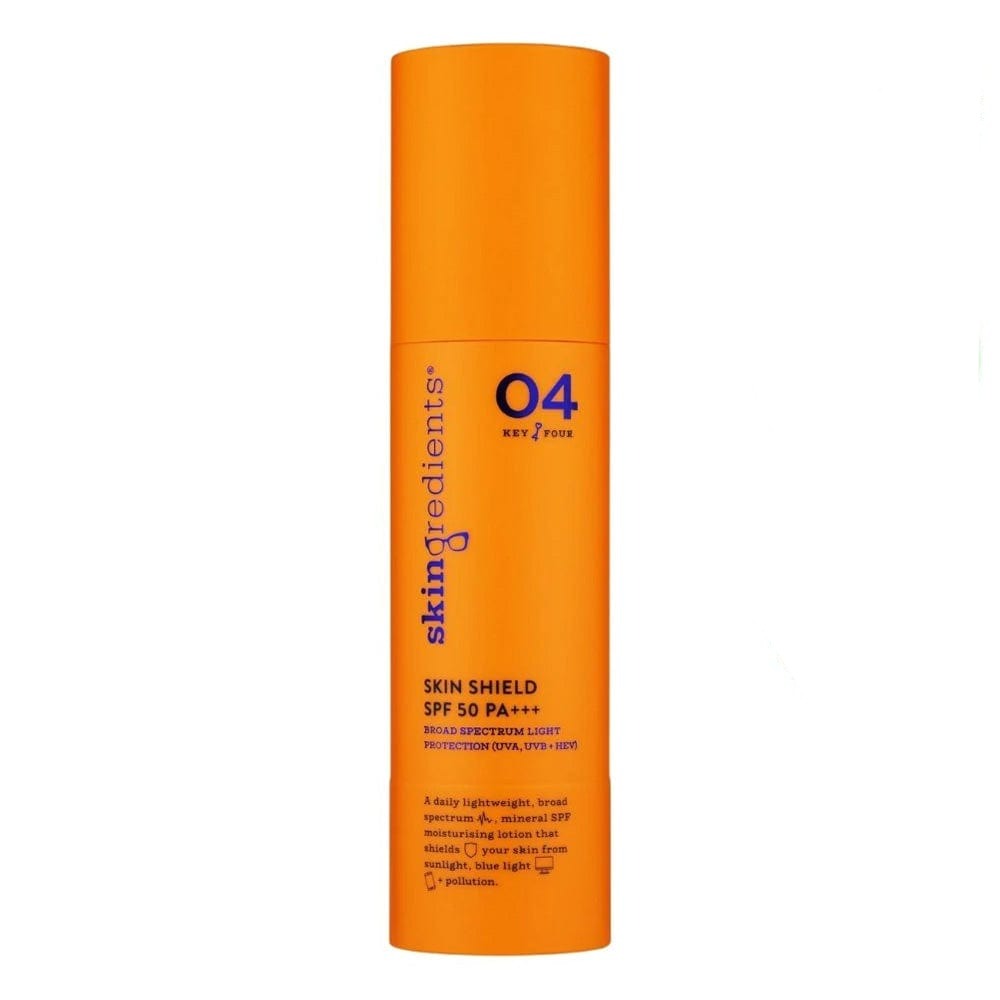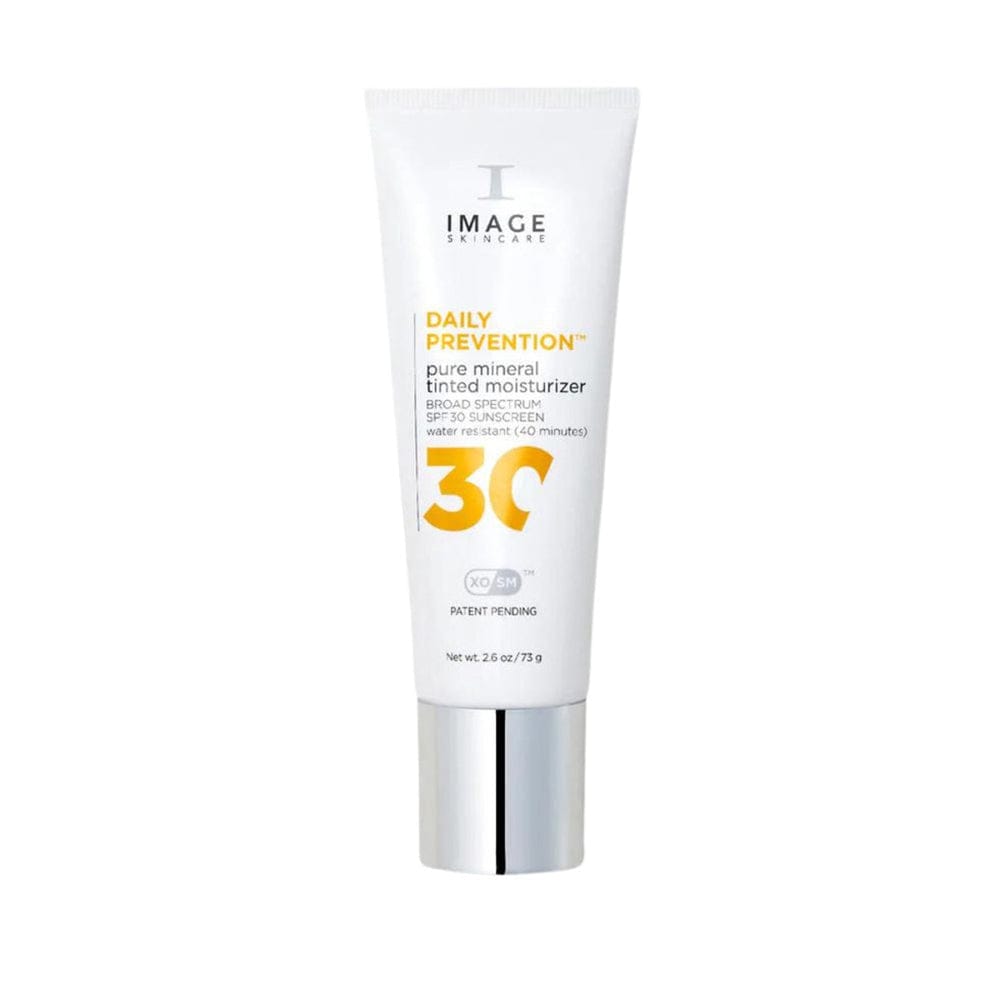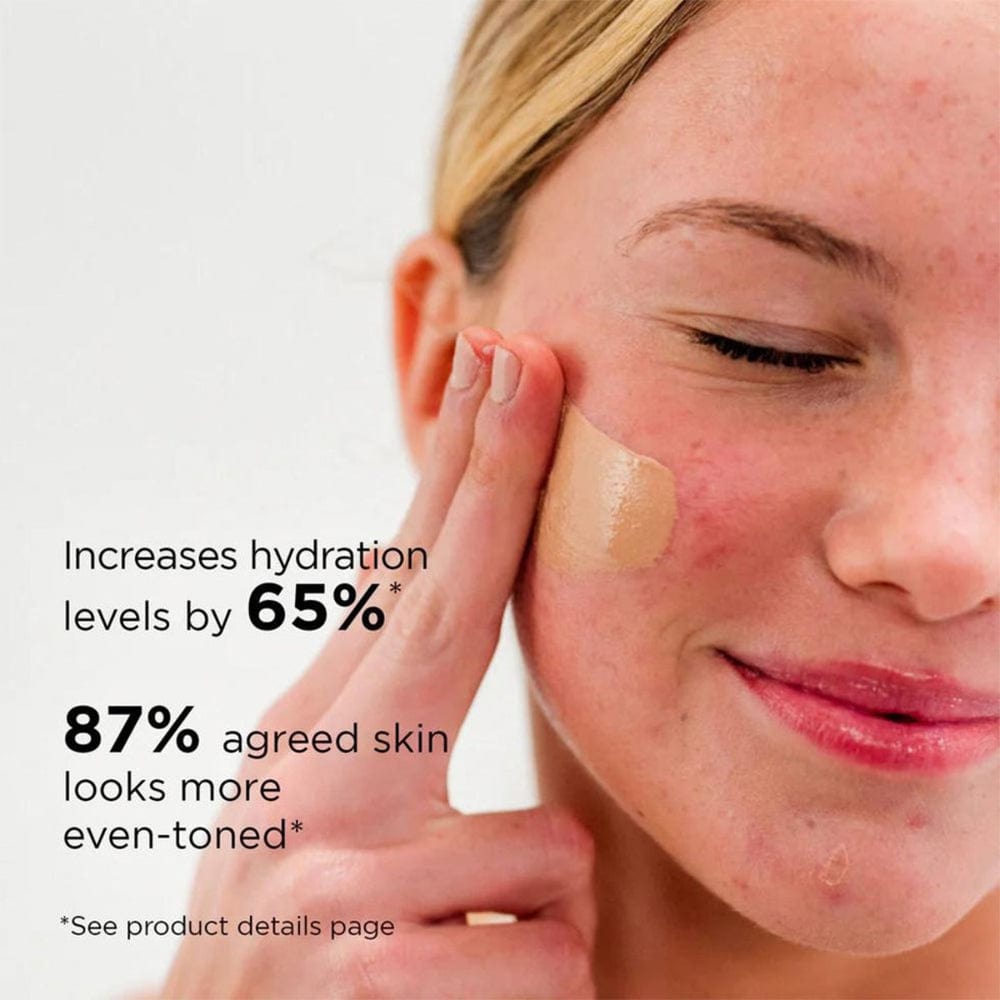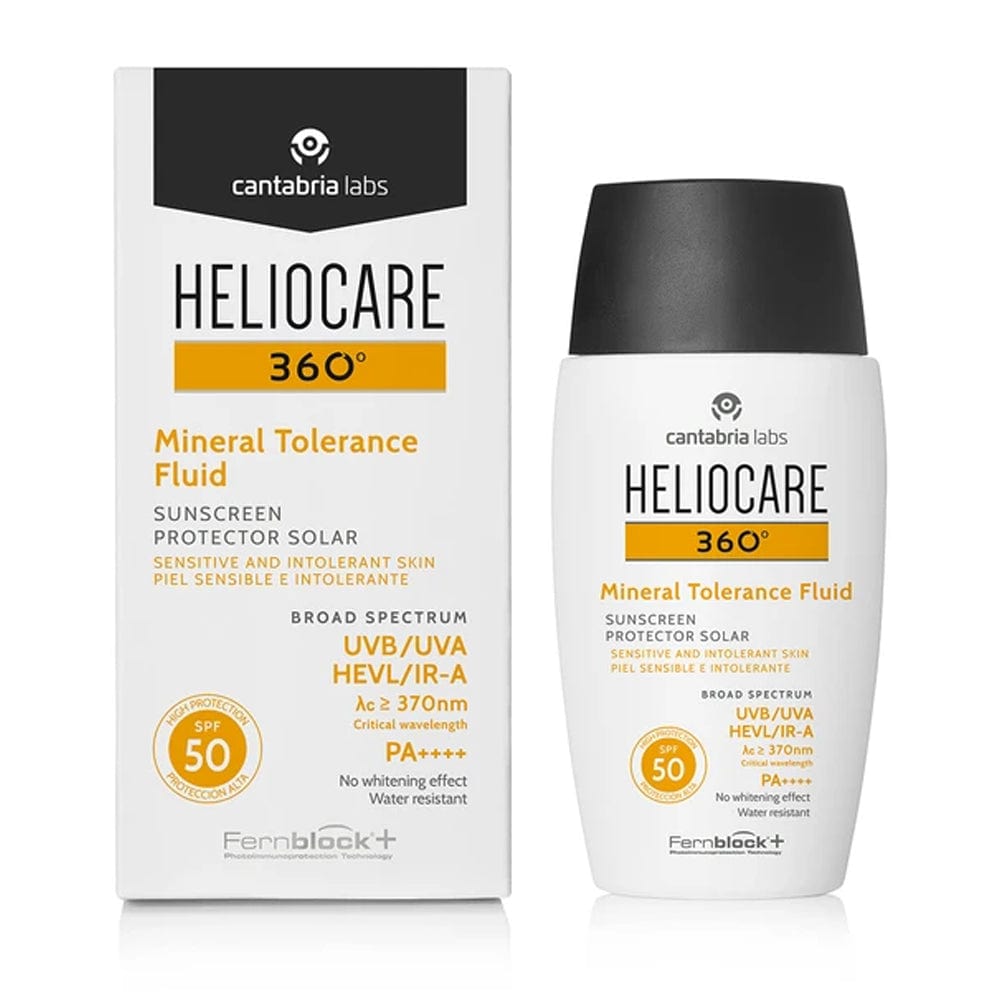Sensitive skin needs sun protection more than most and unfortunately, chemical sunscreens can be irritating. Mineral filters are perfect for troublesome skin including sensitivity, acne-prone and redness-prone skin. This article highlights the best mineral sunscreens and moisturisers with SPF so you can enjoy your day with peace of mind over premature ageing and UV damage. Explore our curated list of skincare products and advice for creating the perfect base for makeup.
Jump straight to the best mineral SPF
Click on the links below to jump to that section:
- Understanding mineral sunscreen
- Top mineral SPF products – natural non-pilling sun protection
- Mineral SPF application tips
- Choosing the right SPF for your skin
Physically blocking UV exposure, mineral sunscreens are best for reactive skin.
Explore our top picks for mineral face sunscreen for a radiant finish all-day-long
For an invisible finish and zero white cast, follow guidance on applying mineral formulas
Select the best sunscreen lotion whether you have dry, oily or combination skin
Understanding Mineral Sunscreen
There are two types of cosmetic sun barriers – chemical and mineral. Chemical filters are vast and versatile. Meanwhile, the more natural alternative – mineral filters – can be trickier to incorporate into high-protection formulations.
How do Physical Sun Barriers Work?
Mineral sunscreens are known as physical barriers because they physically block or reflect the sun’s harmful radiation. The crystalline particles act like a mirror, reflecting UV light rays.
Because the physical barrier acts as a shield, it often leaves a white cast. Nano-sized particles can look more transparent on the skin. Many brands add pigment to mineral sunscreens to minimise the white cast and offer a multi-functional, tinted sunscreen.
What are the Most Common Mineral Sunscreens?
There are only two types of mineral barriers that are used in cosmetics, zinc oxide and titanium dioxide.
Zinc oxide is effective at blocking both UVA rays and UVB radiation. Titanium dioxide is slightly less effective at reflecting UVA radiation (the type that contributes to premature ageing and skin cancer risk).
Zinc oxide is very popular in cosmetics because it’s non-comedogenic and has healing and soothing properties. It’s the primary active ingredient in Sudocrem.
Why Should you Use a Mineral Sunscreen?
It’s crucial to use sun protection while you’re outdoors because UV radiation is the number one cause of premature skin ageing, dark spots and skin cancer. However, some individuals get on better with mineral formulations because they don’t cause as much irritation. Explore some of the benefits of mineral barriers below:
- More natural sunscreen
- Non-comedogenic (zinc oxide)
- Has soothing and healing benefits (zinc oxide)
- Less irritating for sensitive skin
- Reduces exposure to damaging radiation
- Helps fight photodamage, fine lines and premature ageing
What's the Difference Between Mineral and Chemical Sunscreen?
Chemical sunscreens primarily work like a sponge, by absorbing UV photons. A chemical reaction occurs turning damaging radiation into low-level heat which dissipates on its own. Chemical sunscreens take around 15-30 minutes to become fully effective. There is ongoing research into the health effects of chemical sunscreens, they’re currently safe to use but some individuals choose to avoid them for health reasons.
As explained, mineral sunscreens act like a mirror, so it doesn’t have this heating effect, and they’re effective immediately upon application. There’s little to worry about when it comes to absorption into the bloodstream.
Overall, mineral sunscreens are a great option for sensitive skin and health-conscious individuals. However, they often have a white cast and may have more challenging formulations. Chemical sunscreen is practical, versatile and a good option if you don’t struggle with sensitivity.
The Pros and Cons of Mineral and Chemical Sunscreen
| Pros ✅ |
|---|
|
| Cons ❌ |
|
| Pros ✅ |
|---|
|
| Cons ❌ |
|
Top Mineral SPF Products - Non-Pilling Natural Sun Protection

1. Skingredients Skin Shield Moisturising and Priming SPF 50 PA+++
The Skingredients Skin Shield combines high-factor sun protection with skin-loving ingredients for a dewy finish and absolutely no white cast. Explore the product features below:

“Love shield have re-purchased many times. Really adds a lovely subtle tint to skin and blurs imperfections ever so slightly. Hard washed out of clothes tho so be careful where it gets.”

“Love this moisturizer. Second bottle. Ran out and considered going back to Image but went with Skingredients again. Love the primer in it and make up lasts all day!!! Great Irish brand”

| Key Benefits & Features |
|---|
|
| Considerations: |
|
2. Avene Mineral Fluid SPF 50+ 40ml
The Avene Mineral Fluid SPF50+ makes the most of full-spectrum mineral filters without a white cast. This high factor facial SPF is suitable for reactive skin. Explore the product features below:

““I have purchased this SPF before and liked it so much that I re-purchased same. The texture is very nice, easy to apply, great shade & leaves no white residue. Most importantly, this provides very high protection for my ultra-sensitive skin.””
| Key Benefits & Features |
|---|
|
| Considerations: |
|
3. Image Daily Prevention Pure Mineral Tinted Moisturizer SPF30
Another fantastic moisturiser with SPF from the IMAGE Skincare range is the Daily Prevention Mineral Tinted Moisturizer. It offers deep hydration and high sun protection to help the skin feel comfortable, without blocking pores or causing irritation. Explore the product features:


| Key Ingredients: |
|---|
|
| Why We Love It: |
|
4. Heliocare Mineral Tolerance Fluid SPF50 50ml
A sensitive skin staple, this Heliocare tinted mineral facial SPF contains broad-spectrum mineral filters and powerful antioxidants. It’s a great option to prevent damage from free radicals. Explore the product features:

| Key Benefits & Features: |
|---|
|
| Considerations: |
|
Mineral SPF Application Tips
If you’re ready to start using a mineral sunscreen, it’s important to understand how to apply it to avoid the dreaded white cast and pilling. Here is our expert advice on technique and common mistakes.
How to Avoid a White Cast & Pilling
- Start with the right moisturiser: A lightweight, non-greasy moisturiser is best under a mineral SPF. Let that absorb for 5-10 minutes.
- ✅Look for humectant ingredients like glycerin or hyaluronic acid as these help your moisturiser absorb better.
- ❌Avoid silicones in your moisturiser as these create a film, which, once disturbed will ball up and pill.
- Apply sunscreen in layers: Instead of slapping it on, try applying a little bit at a time making sure to use the recommended half teaspoon in total. Wait 30-90 seconds between applications.
- ❌ Avoid silicones in your mineral SPF as these can pill when layered.
- ✅Press, don’t rub: using gentle pressing motions helps to avoid a streaky white cast.
- Give it time to set: Leave your mineral SPF around 10-15 to absorb and set in before applying makeup.
- This lets the product bind to the skin properly for max UV protection
- It also has time to dry down to reduce disturbance from makeup application.
- Make-up application tips
- ✅Try using an SPF that acts as a primer like the Skingredients Skin Shield.
- ✅Apply makeup by pressing with a damp sponge, don’t wipe and drag product over the face as this disturbs the layers underneath.
- ✅Choose a tinted mineral SPF if you want light coverage and forego makeup.
Best Practices for Reapplication
Reapplying mineral sunscreen can be a bit more complicated. Here’s our advice for when you want to spend longer in the sun.
- Wear a tinted mineral SPF: This way, your makeup is your sunscreen, and you can top it up as needed. If you have oily skin, it may be helpful to blot the T zone before reapplying.
- Find a tinted mineral setting powder: This can be reapplied to the face throughout the day without a white cast.
- If you’re barefaced, blot any excess oil from the skin and reapply your mineral SPF in thin layers as before.
Choosing the Right Mineral SPF for Your Skin Type

Recommendations for Dry Skin
If you have dry skin, you may want to look for additional hydrating ingredients such as hyaluronic acid, glycerin and ceramides which reinforce the skin barrier and natural moisture.
One of the best options for dry skin is the IMAGE Daily Prevention Tinted Moisturizer. Containing hydrators, vitamins and antioxidants, it helps keep your skin moisturised and radiant.
Best Options for Oily Skin
A mineral SPF is a great option for oily skin because it can have a mattifying effect. You may want to look for terms like: ‘Matte Finish’, ‘Mattifying’ or ‘Non-Greasy’ to avoid excess shine.
The Heliocare Mineral Tolerance Fluid is a great choice because it dries semi-sheer on all skin types and doesn’t leave greasy residue, Moreover, all the ingredients are non-comedogenic.
Ideal Choices for Acne-Prone Skin
If you have acne-prone skin, you could select acne-healing zinc oxide, niacinamide, vitamin C and other skin-healing and soothing ingredients.
While all of the sunscreens we’ve reviewed are non-comedogenic and contain healing zinc oxide, the Skingredients Skin Shield would be suitable for acne-prone skin. It contains only zinc oxide, niacinamide and soothing allantoin.
Mineral Sunscreen for Sensitive Skin
Sensitive skin should avoid fragrances and ensure allergy testing. The Avene Tinted Mineral Fluid SPF50 offers ultra-high, hypoallergenic sun protection for sensitive skin.
Frequently Asked Questions
Is mineral sunscreen better for sensitive skin?
Yes, mineral sunscreen is generally better for sensitive skin because it sits on the surface and is less likely to cause irritation or allergic reactions.
Can mineral SPF be used under makeup?
Yes, mineral SPF can be worn under makeup, especially when applied in thin layers and allowed to set before foundation.
How Much Mineral Sunscreen Should I Apply to My Face?
You should apply about half a teaspoon or two full fingers’ length of mineral sunscreen to your face and neck. Consider applying in two thinner layers.
How can you tell if a sunscreen is mineral or chemical?
Check the key ingredients list — zinc oxide and/or titanium dioxide are mineral UV filters. Oxybenzone, Octocrylene, Avobenzone, Oxynoxate and Homosalate are common examples of chemical UV filters - avoid these if you’re after mineral-based protection.
Is it safe to wear zinc oxide sunscreen every single day?
Yes, zinc oxide sunscreen is safe and even recommended for daily use due to its broad-spectrum SPF and skin-soothing properties.
Are there any good non-comedogenic sunscreens?
Yes, it’s much more likely that you’ll find a non-comedogenic mineral sunscreen than a chemical one. Mineral filters sit on the skin’s surface without blocking pores.




